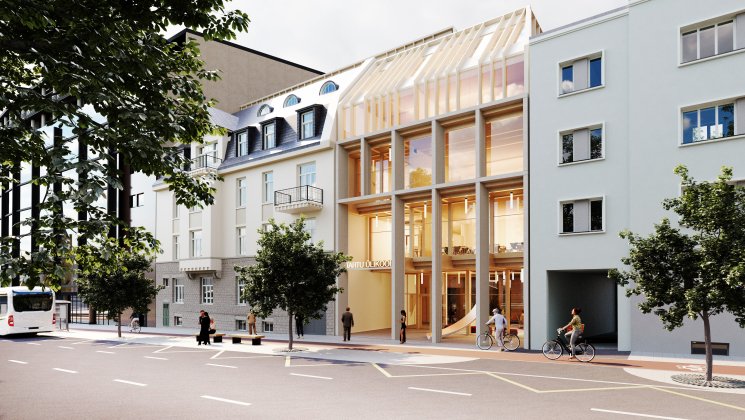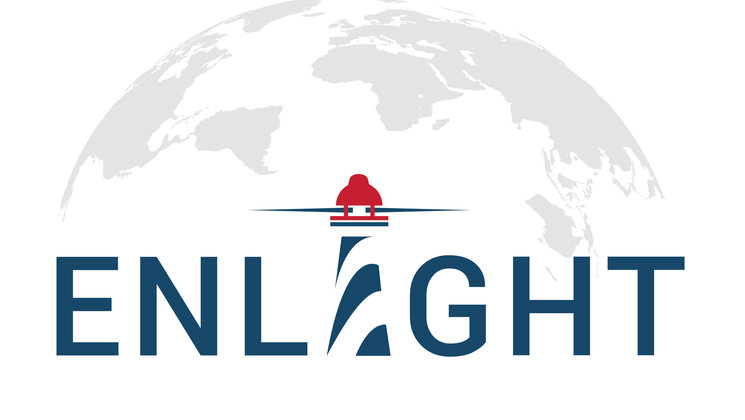-
Faculty of Arts and HumanitiesDean's Office, Faculty of Arts and HumanitiesJakobi 2, r 116-121 51005 Tartu linn, Tartu linn, Tartumaa EST0Institute of History and ArchaeologyJakobi 2 51005 Tartu linn, Tartu linn, Tartumaa EST0Institute of Estonian and General LinguisticsJakobi 2, IV korrus 51005 Tartu linn, Tartu linn, Tartumaa ESTInstitute of Philosophy and SemioticsJakobi 2, III korrus, ruumid 302-337 51005 Tartu linn, Tartu linn, Tartumaa EST0Institute of Cultural ResearchÜlikooli 16 51003 Tartu linn, Tartu linn, Tartumaa EST0Institute of Foreign Languages and CulturesLossi 3 51003 Tartu linn, Tartu linn, Tartumaa EST0School of Theology and Religious StudiesÜlikooli 18 50090 Tartu linn, Tartu linn, Tartumaa EST0Viljandi Culture AcademyPosti 1 71004 Viljandi linn, Viljandimaa EST0Professors emeritus, Faculty of Arts and Humanities0Associate Professors emeritus, Faculty of Arts and Humanities0Faculty of Social SciencesDean's Office, Faculty of Social SciencesLossi 36 51003 Tartu linn, Tartu linn, Tartumaa EST0Institute of EducationJakobi 5 51005 Tartu linn, Tartu linn, Tartumaa EST0Johan Skytte Institute of Political StudiesLossi 36, ruum 301 51003 Tartu linn, Tartu linn, Tartumaa EST0School of Economics and Business AdministrationNarva mnt 18 51009 Tartu linn, Tartu linn, Tartumaa EST0Institute of PsychologyNäituse 2 50409 Tartu linn, Tartu linn, Tartumaa EST0School of LawNäituse 20 - 324 50409 Tartu linn, Tartu linn, Tartumaa EST0Institute of Social StudiesLossi 36 51003 Tartu linn, Tartu linn, Tartumaa EST0Narva CollegeRaekoja plats 2 20307 Narva linn, Ida-Virumaa EST0Pärnu CollegeRingi 35 80012 Pärnu linn, Pärnu linn, Pärnumaa EST0Professors emeritus, Faculty of Social Sciences0associate Professors emeritus, Faculty of Social Sciences0Faculty of MedicineDean's Office, Faculty of MedicineRavila 19 50411 Tartu linn, Tartu linn, Tartumaa ESTInstitute of Biomedicine and Translational MedicineBiomeedikum, Ravila 19 50411 Tartu linn, Tartu linn, Tartumaa ESTInstitute of PharmacyNooruse 1 50411 Tartu linn, Tartu linn, Tartumaa ESTInstitute of DentistryL. Puusepa 1a 50406 Tartu linn, Tartu linn, Tartumaa ESTInstitute of Clinical MedicineL. Puusepa 8 50406 Tartu linn, Tartu linn, Tartumaa ESTInstitute of Family Medicine and Public HealthRavila 19 50411 Tartu linn, Tartu linn, Tartumaa ESTInstitute of Sport Sciences and PhysiotherapyUjula 4 51008 Tartu linn, Tartu linn, Tartumaa ESTprofessors emeritus, Faculty of Medicine0associate Professors emeritus, Faculty of Medicine0Faculty of Science and TechnologyDean's Office, Faculty of Science and TechnologyVanemuise 46 - 208 51003 Tartu linn, Tartu linn, Tartumaa ESTInstitute of Computer ScienceNarva mnt 18 51009 Tartu linn, Tartu linn, Tartumaa ESTInstitute of GenomicsRiia 23b/2 51010 Tartu linn, Tartu linn, Tartumaa ESTEstonian Marine Institute0Institute of PhysicsInstitute of ChemistryRavila 14a 50411 Tartu linn, Tartu linn, Tartumaa ESTInstitute of Mathematics and StatisticsNarva mnt 18 51009 Tartu linn, Tartu linn, Tartumaa EST0Institute of Molecular and Cell BiologyRiia 23, 23b - 134 51010 Tartu linn, Tartu linn, Tartumaa ESTTartu ObservatoryObservatooriumi 1 61602 Tõravere alevik, Nõo vald, Tartumaa EST0Institute of TechnologyNooruse 1 50411 Tartu linn, Tartu linn, Tartumaa ESTInstitute of Ecology and Earth SciencesJ. Liivi tn 2 50409 Tartu linn, Tartu linn, Tartumaa ESTprofessors emeritus, Faculty of Science and Technology0associate Professors emeritus, Faculty of Science and Technology0Area of Academic SecretaryHuman Resources OfficeUppsala 6, Lossi 36 51003 Tartu linn, Tartu linn, Tartumaa EST0Area of Head of FinanceFinance Office0Area of Director of AdministrationInformation Technology Office0Administrative OfficeÜlikooli 17 (III korrus) 51005 Tartu linn, Tartu linn, Tartumaa EST0Estates Office0Marketing and Communication OfficeÜlikooli 18, ruumid 102, 104, 209, 210 50090 Tartu linn, Tartu linn, Tartumaa EST0Area of Vice Rector for Academic AffairsOffice of Academic AffairsUniversity of Tartu Youth AcademyUppsala 10 51003 Tartu linn, Tartu linn, Tartumaa ESTStudent Union OfficeÜlikooli 18b 51005 Tartu linn, Tartu linn, Tartumaa EST0Centre for Learning and TeachingArea of Vice Rector for ResearchUniversity of Tartu LibraryW. Struve 1 50091 Tartu linn, Tartu linn, Tartumaa ESTGrant OfficeArea of Vice Rector for DevelopmentCentre for Entrepreneurship and InnovationNarva mnt 18 51009 Tartu linn, Tartu linn, Tartumaa EST0University of Tartu Natural History Museum and Botanical GardenVanemuise 46 51003 Tartu linn, Tartu linn, Tartumaa EST0International Cooperation and Protocol Office0University of Tartu MuseumLossi 25 51003 Tartu linn, Tartu linn, Tartumaa EST0Area of RectorRector's Strategy OfficeInternal Audit Office
Experts debated the future of higher education funding
On 26 April, at the invitation of the University of Tartu, the rectors of Estonia's public universities, representatives of the Ministry of Education and Research, the Estonian Qualifications Authority and other experts in higher education gathered to start a discussion on the development of a long-term plan for financing higher education.
In order to gradually make up for the continuous underfunding of higher education, it was agreed in the 2022 national budget strategy that the amount allocated to higher education would increase by 15 percent per year until 2026 (incl.), while a permanent financing plan is developed.
"We understand that both the state of public finances and the geopolitical situation are very challenging at the moment. Nonetheless, it is inevitable to continue the societal debate on the future of higher education in Estonia once the difficult times are over," said Toomas Asser, Rector of the University of Tartu. "We need a long-term plan for higher education funding as early as spring 2025, when the renegotiation of administrative contracts will start. So, over the coming year, we need to work out a funding model on the basis of which universities can agree on commitments with the state for the new period."
At the gathering, Toomas Asser, UT student representative Renar Kihho and OSKA Head Analyst at the Estonian Qualifications Authority Yngve Rosenblad gave an overview of the expectations and needs of universities, students and the labour market for the future of higher education. Member of the Estonian Academy of Sciences Jaak Aaviksoo, who is compiling a review of Estonian education spending for the Ministry of Education and Research, presented the higher education section of the forthcoming analysis, and Margus Haidak, Head of Higher Education Policy and Lifelong Learning Department of the ministry, spoke about the possibilities of private funding in higher education and proposals for reforming the student loan system. Kadri Männasoo, Professor at the Department of Economics and Finance, Tallinn University of Technology, addressed the societal choices of financing higher education, taking into account the socio-economic benefits of higher education.
The gathering stressed the need to agree on a joint methodology for calculating the costs of higher education, including research, in order to analyse the current situation and prepare funding scenarios. In addition to covering the costs of higher education, the IT and real estate investments needed to run universities must also be guaranteed. In the context of the involvement of private funding and the declining population, it was acknowledged that the role of international students in the future Estonian economy and society needs to be discussed. In a situation where more jobs requiring higher education are emerging on the labour market, the target set in Estonia's long-term development strategy to have at least 45% of people aged 25–34 with tertiary education by 2035 is still relevant. It is important, however, that higher education is not limited to a bachelor's degree. It was also pointed out that there is a need for more people with both higher education and vocational training, which is why there is a need to focus on the population without professional education.
Discussions on the future of higher education funding will continue in the near future under the leadership of the universities as well as in the Ministry of Education and Research, the Riigikogu and the Estonian Research and Development Council.

Design contract signed for the renovation and extension of the academic building of the UT Tallinn office of the School of Law

What is ENLIGHT and what it offers to universities


